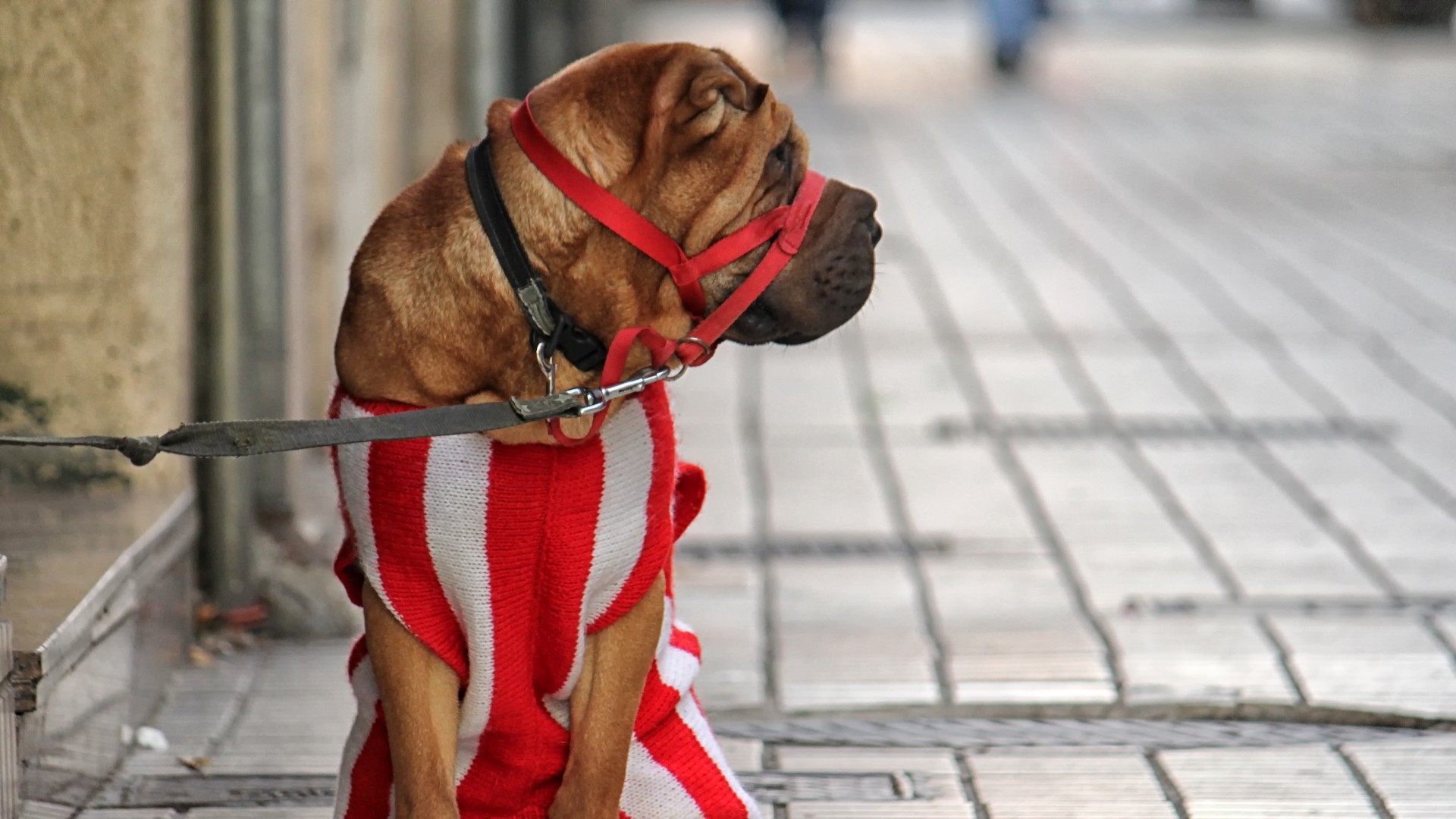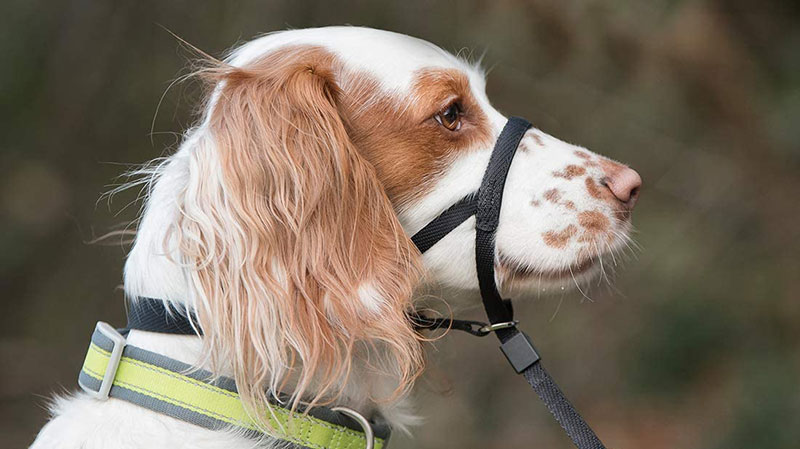Head collars for dogs explained: everything you need to know about them
Are head collars for dogs safe? How do you use them? We answer all your questions

For dog owners wishing that walks with their pooch were easier, a dog head collar may be on the radar. You may be curious as to what they entail and whether they can be considered among the best dog harnesses available.
Head collars are often confused with muzzles because of how they wrap around a dog's face, but there are a few key differences. When wearing a head collar, your dog can easily open and close its mouth, unlike a muzzle. The way the collar rests on your dog's head and neck means they can't pull as hard without feeling a little pain.
But are head collars the best option for you and your dog? We'll look at how they work, why they are used, and more so you can make an informed decision about what's best for you and your pooch.
- Best tactical dog harness
- Best dog car harness
- Best dog leashes
- How to stop a dog from pulling on a leash
What is a dog head collar used for?
A dog head collar or head halter is an alternative to neck collars and harnesses. It features a strap that wraps around your dog's muzzle and another one that goes behind their ears, making it easier to control them on a walk. Head halters apply pressure behind the neck and around the muzzle.
The idea is that where the nose goes, the body follows. Instead of having to pull against your dog's strength when using a neck collar, which can cause injuries, a head collar only requires gentle pressure to turn a dog's head. Trainers often use dog head collars when training puppies or when teaching owners with large dogs how to control them. Since it doesn't inflict pain like a prong collar or potentially injure like a neck collar, it is preferred by many as a training option.
But, like any harness or collar, dog head collars aren't a solution for a dog that walks poorly on a leash. Some dogs are averse to the head collar or halter, and the collar itself does not replace consistent training.
Are head collars safe for dogs?

Head collars are considered safe for dogs, but you must ensure that they are fitted properly or they can cause irritation due to rubbing. This can also happen if your dog has sensitive skin, as the head collar is usually made of nylon and sits in a sensitive area with not a lot of muscle or fat.
Get the best advice, tips and top tech for your beloved Pets
They can be difficult to put on, especially if you have an active dog, as it requires properly placing the nose loop and the snap or buckle behind the ear. It's easy to put a head collar on upside down or twisted, which can irritate your dog.
Overall, head collars are safe, but some owners may not like them due to the work required when putting them on and how they can irritate a dog's skin. Despite being collars, they look like muzzles, which some owners may not prefer.
How effective are head collars for dogs?
When combined with the proper training, head collars can be effective. Getting your dog used to the head collar is important, as they can easily get worked up when putting it on. But for people who have trouble walking strong dogs, a properly fitted head collar can be effective for maintaining control during a walk. It can even have a calming effect on some dogs, but desensitizing your dog to it is a must.
Many find that the dog head collar or halter is especially helpful with leash aggressive or reactive dogs, as it responds to lunging in a manner that is not painful but corrective all the same. It will gently restrain and turn away a dog from whatever it's lunging toward without causing pain or stress like a prong or choke collar would.
A properly used head collar can lead to loose-leash walks, which is ideal for any owner, but it's important that you take the necessary steps to ensure your dog is comfortable wearing one. Reach out to a trainer and do your research. VCA Animal Hospitals has some tips on how to use a head halter when training your dog.
Summary
Like any harness or leash, it's up to the owner, the dog, and the training to determine whether a dog head collar is the right option for you and your dog. In some cases, a dog may dislike wearing the head halter because of where it lies. Dogs can slip out of the head harness, so it's recommended you use two leashes if you're worried about this, though this may be too much of a challenge for some owners.
But for those whose dogs can tolerate wearing the head harness and who may otherwise be a strong puller on walks, a head collar for your dog may be the best option. It's good for families with elderly or young family members who aren't strong enough to walk a dog that pulls constantly, but the proper training is required for both the walker and the dog. Reach out to a trainer with any concerns you have, and make sure you choose the right size for your pooch to ensure maximum comfort.
What to use when walking a dog is different for every family and their pooch, but doing your research and approaching this with patience will guarantee you find the right fit for you.
